The Gurunsi (Kassena) tribe live in fortified houses in the Tiebélé region on the border of Burkina Faso and Ghana. The Gurunsi women create beautiful abstract frescoes that decorate the walls of their mud huts,situated in a round formation.
The Gurunsi architecture, known for the beauty of its functional lines, inspired the Swiss vanguard architect Le Corbusier.
enjoy the great video below courtesy by steinpom
enjoy the great video below courtesy by steinpom
Tiebele
by Belinda
In the south of Burkina, very close to the Ghanaian border lies a tiny village called Tiebele where you can visit some wonderfully painted Kassena houses of the village chief and his royal family (i.e. about 300 members in total). It is described in the guide books as ‘one of the few official tourist attractions’ in Burkina - which almost makes you not wanting to go - but having had to cope with the horrifying huge hordes of tourists in Bruges for years, I can honestly say they have no idea what they’re talking about! :-) Apart from a little entrance fee and (interesting) guided tour, it was really quiet and peaceful, and we were the only ‘tourists’ around.
Pots, canari’s and calabashes are essential to the village life as they are used to cook and store food & drinks, etc. They also play an important role in funeral rituals, e.g. on the fourth day of a woman’s death calabashes filled with shea butter will be broken on the path to her parent’s house.
The houses have different shapes, depending on who's living in them: big rectangular ones for (married) couples, single round huts with straw roofs for bachelor men, and figure 8-shaped-fused-together round huts for (grand)parents and bachelor women - who are not (allowed to?) living on their own.
The (grand)mother house is the oldest one in the village, housing the (ancestral) spirits and decorated with all the important symbols of the Kassena culture. On the right hand side of the entrance you can see the bas-relief of a snake, i.e. the boa constrictor, which is considered sacred as they are believed to hold the spirit of the grandmother. Next to it the lizard, ‘loyal pet’ and occupant of every house in Burkina. A Kassena house is only fit to be lived in once a lizard has moved in - if lizards are refusing to live in it, it would be a very bad omen. The pipe and walking stick (= left from the entrance), honorary symbols of old age; the canvas (just above the entrance) to protect the chief from the heat of the sun; the sun and moon (top left) representing the universe; geometric crosses (top right) which they cut onto children’s skin/face, the scars of which are believed to protect against disease;
and so much more.
The houses have no windows and are dug into the ground, with very small and low entrances often almost immediately leading to an interior wall with the same hight to protect the occupants from outside - enemy or wild animal - attacks. As a consequence it is very dark and enclosed inside, and hard to imagine one could actually live/cook/eat/sleep there without feeling too claustrophobic.
Inside the house it is absolutely pitch black. We only saw a quick image of these pots, canari’s and calabashes thanks to the flash of our camera.
Dancing girl in Tiebele.
| http://www.facebook.com/pages/TAMBAKUNDA/125542745075 |
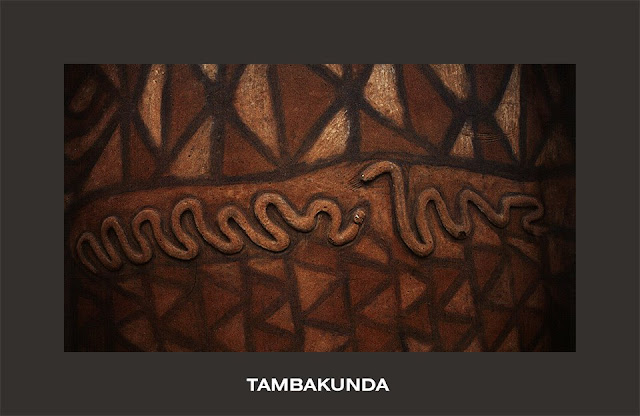 |
| http://www.facebook.com/pages/TAMBAKUNDA/125542745075 |
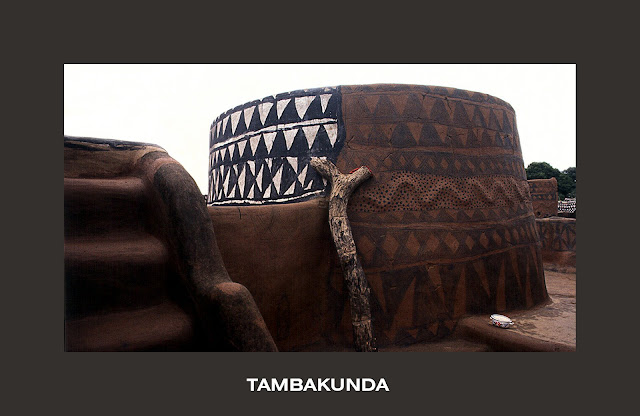 |
| http://www.facebook.com/pages/TAMBAKUNDA/125542745075 |
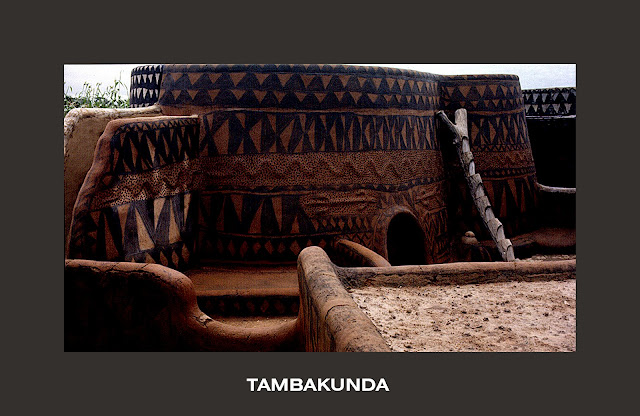 |
| http://www.facebook.com/pages/TAMBAKUNDA/125542745075 |
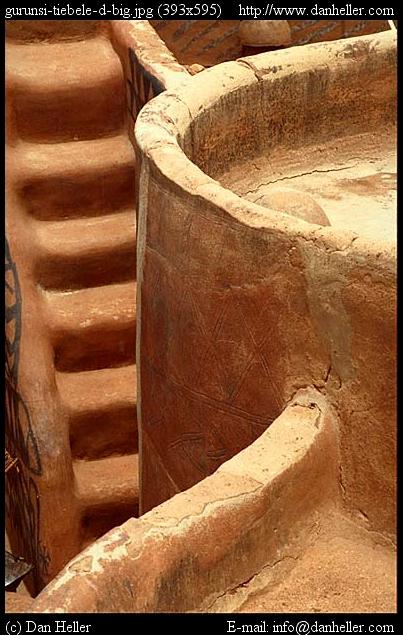 |
| http://www.danheller.com |
| http://www.danheller.com |
| http://www.danheller.com |
| http://www.danheller.com |
| http://www.danheller.com |
SOURCE TAMBAKUNDA


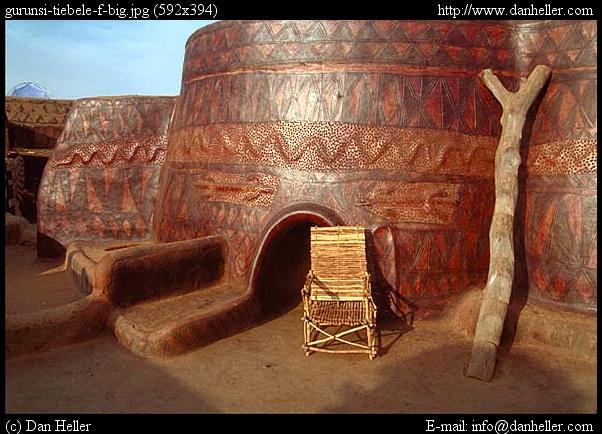








0 reviews:
Post a Comment